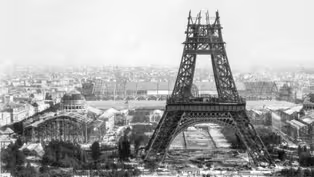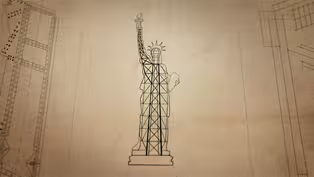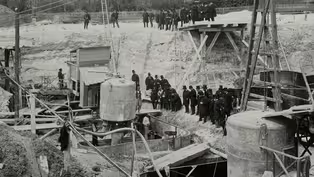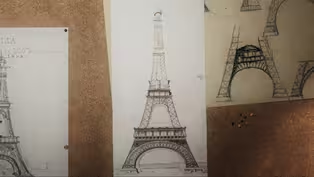
5 things to know about the Eiffel Tower
Clip: Season 51 Episode 3 | 1m 40sVideo has Closed Captions
Did you know that the Eiffel Tower was once red?
The Eiffel Tower is an engineering icon that changed the face of the modern world.
Problems playing video? | Closed Captioning Feedback
Problems playing video? | Closed Captioning Feedback
National Corporate funding for NOVA is provided by Carlisle Companies. Major funding for NOVA is provided by the NOVA Science Trust, the Corporation for Public Broadcasting, and PBS viewers.

5 things to know about the Eiffel Tower
Clip: Season 51 Episode 3 | 1m 40sVideo has Closed Captions
The Eiffel Tower is an engineering icon that changed the face of the modern world.
Problems playing video? | Closed Captioning Feedback
How to Watch NOVA
NOVA is available to stream on pbs.org and the free PBS App, available on iPhone, Apple TV, Android TV, Android smartphones, Amazon Fire TV, Amazon Fire Tablet, Roku, Samsung Smart TV, and Vizio.
Buy Now

NOVA Labs
NOVA Labs is a free digital platform that engages teens and lifelong learners in games and interactives that foster authentic scientific exploration. Participants take part in real-world investigations by visualizing, analyzing, and playing with the same data that scientists use.Providing Support for PBS.org
Learn Moreabout PBS online sponsorship- [Narrator] The Eiffel Tower is an engineering icon that changed the face of the modern world.
Here are five things you may not know about it.
The Eiffel Tower was used as a one-of-a-kind antenna during World War I.
In March, 1918, it intercepted a coded German radiogram.
After it was deciphered, the French successfully avoided German attack turning the tides of the War.
The tower has been painted 19 times since its construction to protect it from corrosion, an average of once every seven years from one painting to the next, the tower's colors have changed several times.
At the time of the World's Fair, it was red, but recently the tower has been repainted the same color as in 1907.
It took 60 metric tons of paint to complete the tower's latest paint job.
It was originally built as a monument for the 1889 World's Fair in Paris.
At the time, it was the tallest structure in the world standing at 1,000 feet tall, more than four times taller than the Notre Dame Cathedral, more than double the height of the Great Pyramid of Giza, and almost twice as tall as the Washington Monument.
The concept for the Eiffel Tower didn't come from Gustave Eiffel, the engineer for whom the tower is named.
Two of his engineers drew the first few sketches, but Eiffel didn't think the design was attractive.
A few weeks later, another architect added decorative arcs to the original sketch, as well as platforms for public use.
Eiffel finally became excited by the Project.
Eiffel built a one-of-a-kind elevator.
In this space, located right below one of the tower's pillars.
Eiffel built an elevator based on the same technology he used to level the tower, hydraulic pressure.
(slow relaxing music)
Building the Eiffel Tower Preview
Video has Closed Captions
Preview: S51 Ep3 | 30s | Explore the engineering behind Paris’s iconic landmark, the tallest structure of its time. (30s)
Inside the Construction of the Statue of Liberty
Video has Closed Captions
Clip: S51 Ep3 | 2m 59s | The Statue of Liberty was one of the most innovative engineering feats of it’s time. (2m 59s)
The Mysterious Illness That Befell Eiffel Tower Construction Workers
Video has Closed Captions
Clip: S51 Ep3 | 2m 50s | Building the massive Eiffel tower on the bank of the Seine River posed more than one challenge. (2m 50s)
Why is the Eiffel Tower Shaped Like That?
Video has Closed Captions
Clip: S51 Ep3 | 1m 58s | The Eiffel Tower was a completely novel design at the time it was built. (1m 58s)
Providing Support for PBS.org
Learn Moreabout PBS online sponsorshipSupport for PBS provided by:
National Corporate funding for NOVA is provided by Carlisle Companies. Major funding for NOVA is provided by the NOVA Science Trust, the Corporation for Public Broadcasting, and PBS viewers.
















